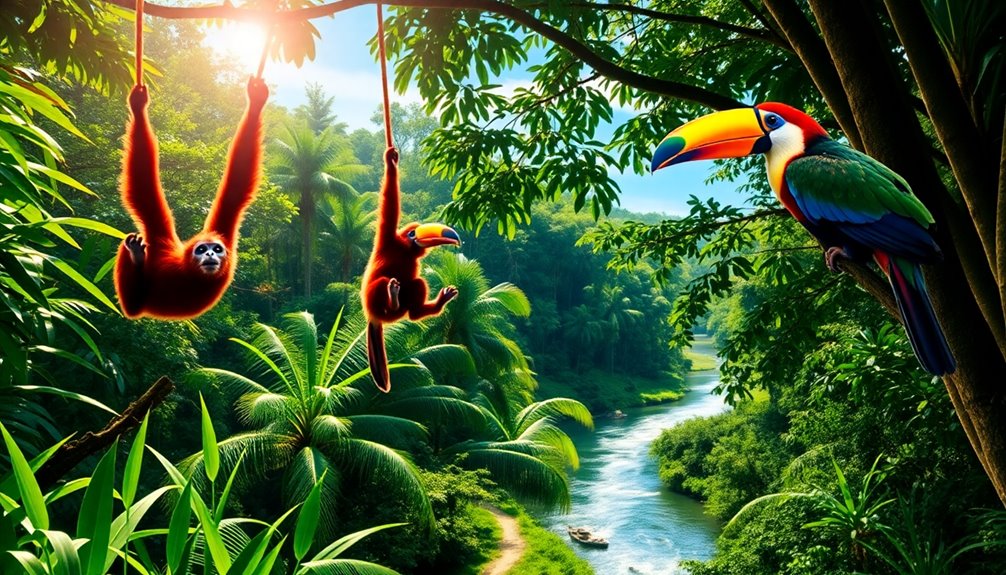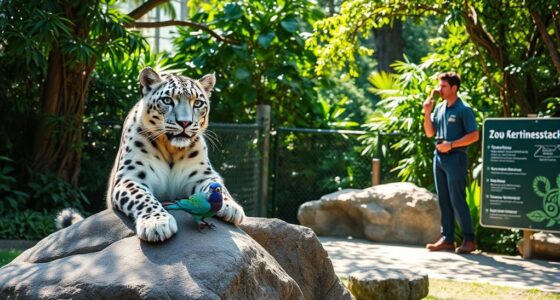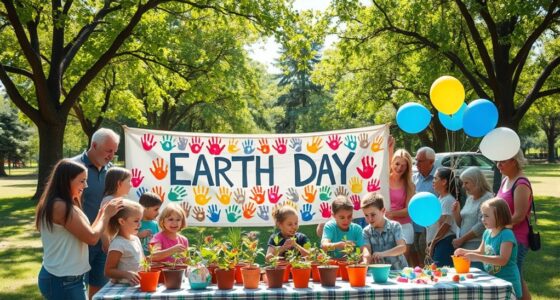Conservation success stories around the world show how collective efforts can restore ecosystems and revive endangered species. For instance, the gray wolf's return to Yellowstone revitalized the park's ecosystem, while reforestation in Brazil's Atlantic Forest combats climate change. Similarly, community-led programs in Madagascar and the Great Green Wall initiative in Africa demonstrate the power of local engagement. Each effort highlights a unique approach to conservation, and you'll discover even more inspiring examples ahead.
Key Takeaways
- The reintroduction of gray wolves in Yellowstone revitalized ecosystems by controlling elk populations and enhancing biodiversity.
- California condor reintroduction efforts, including captive breeding, successfully increased the population from 27 to over 500 individuals.
- Community-led conservation in Madagascar has improved habitats for endangered species through reforestation and sustainable farming practices.
- The Great Green Wall initiative in Africa aims to restore degraded land while promoting sustainable agriculture, benefiting local communities.
- Innovative water conservation projects in Australia, like smart irrigation systems, demonstrate effective resource utilization and community engagement for sustainability.
The Remarkable Recovery of the Gray Wolf in Yellowstone National Park
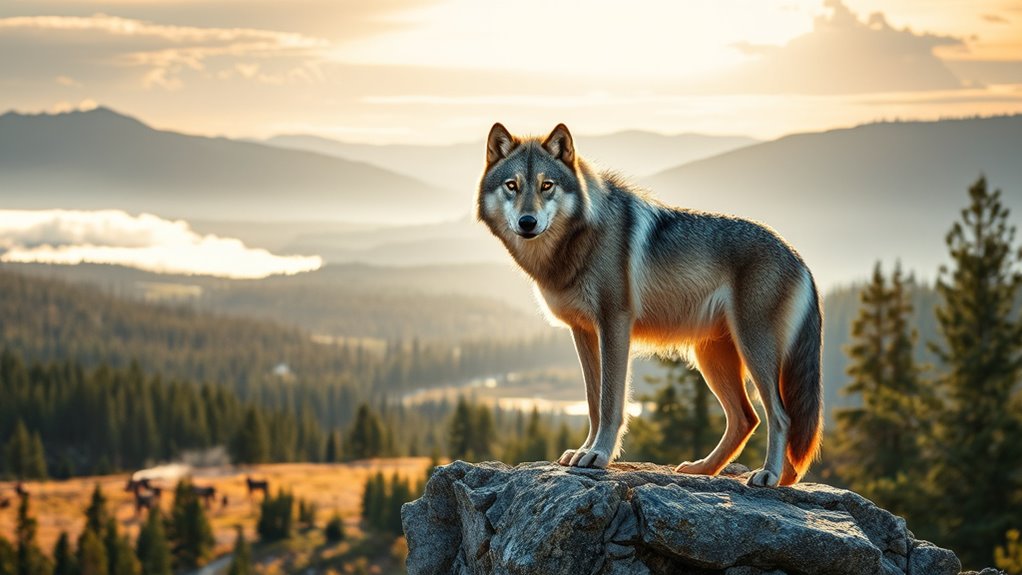
When you think about wildlife conservation success, the gray wolf's recovery in Yellowstone National Park stands out as a prime example.
Reintroduced in 1995 after a 70-year absence, these majestic predators played a crucial role in restoring the park's ecological balance. By controlling elk populations, wolves allowed vegetation to flourish, which in turn benefited other species like beavers and birds.
You can see how this ripple effect revitalized entire ecosystems. The wolves' return not only enhanced biodiversity but also drew tourists eager to witness their majestic presence.
The return of gray wolves revitalized ecosystems, enhanced biodiversity, and attracted tourists eager to witness their majesty.
Yellowstone's gray wolf recovery showcases the power of focused conservation efforts and highlights how restoring one species can lead to widespread ecological benefits. It's a testament to the importance of preserving our natural world.
The Reforestation Efforts in the Atlantic Forest of Brazil

The story of conservation isn't just about recovering iconic species like the gray wolf; it also involves restoring entire ecosystems, such as the Atlantic Forest in Brazil.
This stunning rainforest, once one of the most biodiverse areas on Earth, faced severe deforestation. You might be surprised to learn that dedicated organizations and local communities are leading impressive reforestation efforts.
They're planting native trees, which helps restore habitats for countless species and combat climate change. You can even get involved by supporting these initiatives or participating in tree-planting events.
As the forest regrows, it's not only revitalizing the environment but also reconnecting communities to their natural heritage. Together, you're helping to bring this vibrant ecosystem back to life.
The Successful Reintroduction of the California Condor
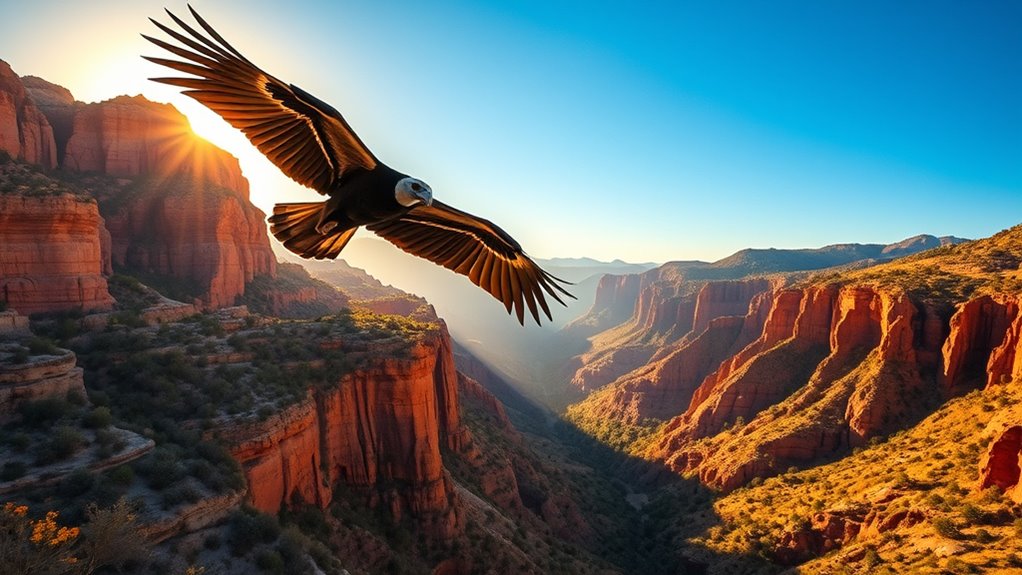
Though once teetering on the brink of extinction, the California condor has made a remarkable comeback thanks to dedicated conservation efforts.
You might be surprised to learn that in the 1980s, only 27 individuals remained. Conservationists stepped in, initiating a captive breeding program that focused on increasing their numbers. By carefully monitoring and nurturing these majestic birds, they successfully released them back into the wild.
Today, you can spot California condors soaring over California and Arizona, where they thrive in their natural habitats. These efforts highlight the importance of collaboration among wildlife agencies, scientists, and the public.
Your support for conservation initiatives can further enhance these successes, ensuring that future generations can appreciate the beauty of the California condor.
Community-Led Conservation in Madagascar
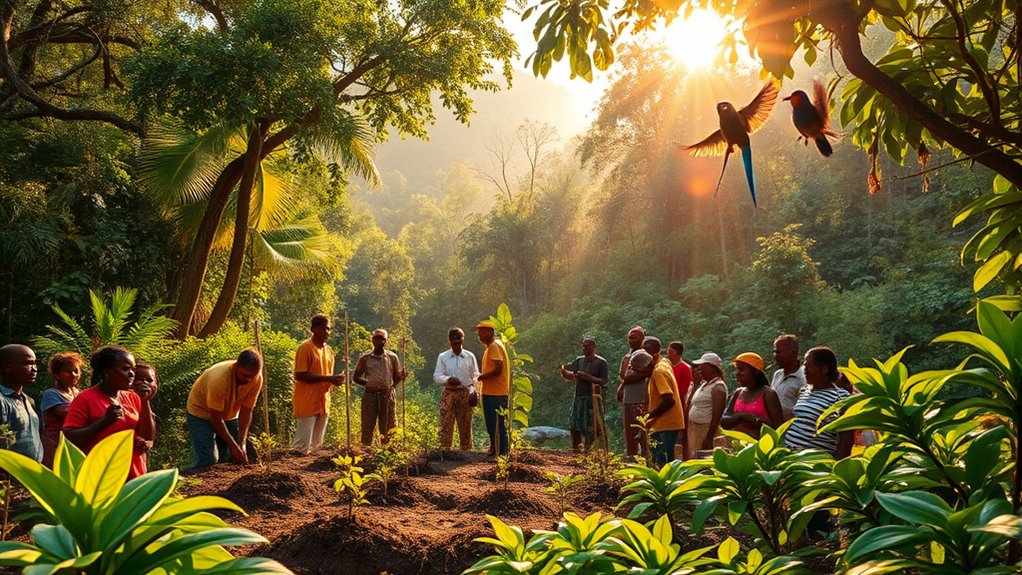
As the California condor's recovery shows, community involvement can play a pivotal role in conservation efforts.
In Madagascar, local communities are stepping up to protect their unique biodiversity. You'll find villagers actively participating in reforestation projects, restoring habitats that are crucial for endangered species like lemurs and chameleons.
By collaborating with NGOs, they're learning sustainable farming practices that reduce deforestation. You might also notice how these communities establish protected areas, ensuring that wildlife thrives while they maintain their livelihoods.
This hands-on approach not only empowers locals but fosters a sense of ownership over their natural resources. When people unite for conservation, they create lasting change, proving that grassroots initiatives can significantly impact the environment and support ecological balance.
The Transformation of the Great Green Wall in Africa

While many regions face the challenges of desertification, the Great Green Wall in Africa stands as a beacon of hope, transforming the landscape and livelihoods across the Sahel.
This ambitious initiative aims to restore 100 million hectares of degraded land by planting trees and promoting sustainable agriculture. As you witness the re-greening of once-barren areas, you can see the positive effects on local communities. Farmers benefit from improved soil health and increased crop yields, while biodiversity flourishes.
The project also addresses climate change, helping to mitigate its impacts on vulnerable populations. By supporting this transformation, you're part of a larger movement that not only combats desertification but also fosters resilience, empowering communities to build a sustainable future together.
The Revival of the Giant Panda Population in China

The success of the Great Green Wall initiative highlights the power of conservation efforts worldwide, including the remarkable revival of the giant panda population in China.
You might be surprised to learn that in the 1980s, only about 1,000 pandas roamed the mountainous forests of Sichuan. Thanks to dedicated conservation programs, habitat restoration, and anti-poaching laws, their numbers have surged to over 1,800 today.
You can see this success in the establishment of reserves and breeding centers, where pandas thrive and reproduce. The Chinese government's commitment, along with global support, has created a safe haven for these beloved creatures.
The Restoration of Coral Reefs in the Caribbean
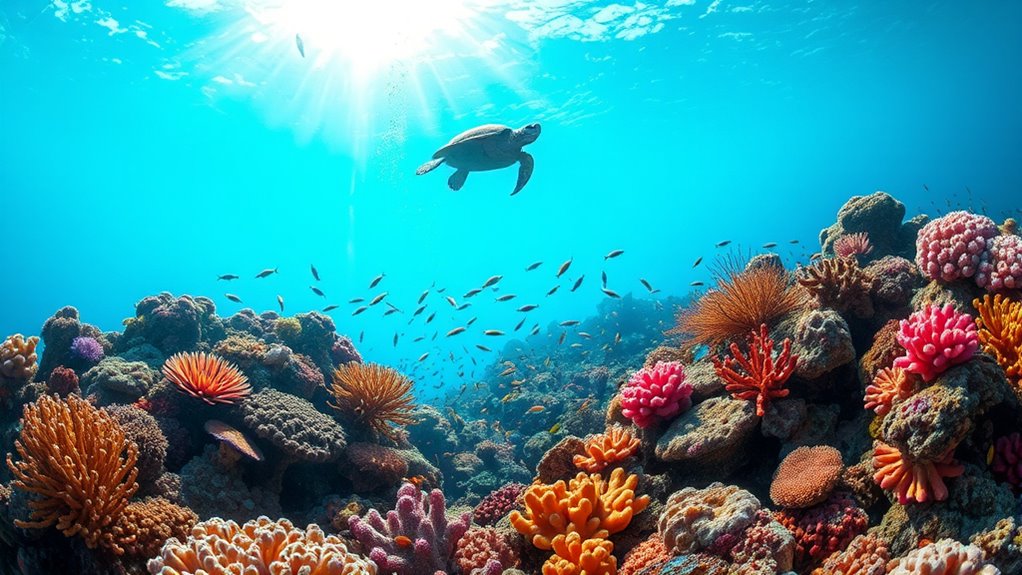
Coral reefs in the Caribbean, once teeming with vibrant marine life, have faced significant decline due to climate change and human activity.
Fortunately, restoration efforts are now underway, aiming to revive these crucial ecosystems. You can get involved by supporting organizations that promote coral gardening, which involves cultivating coral fragments and transplanting them onto degraded reefs.
Volunteer programs often welcome your help, allowing you to participate in hands-on restoration activities. Additionally, advocating for sustainable fishing practices and reducing plastic use can greatly impact coral health.
The Protection of Sea Turtles on the Coasts of Costa Rica
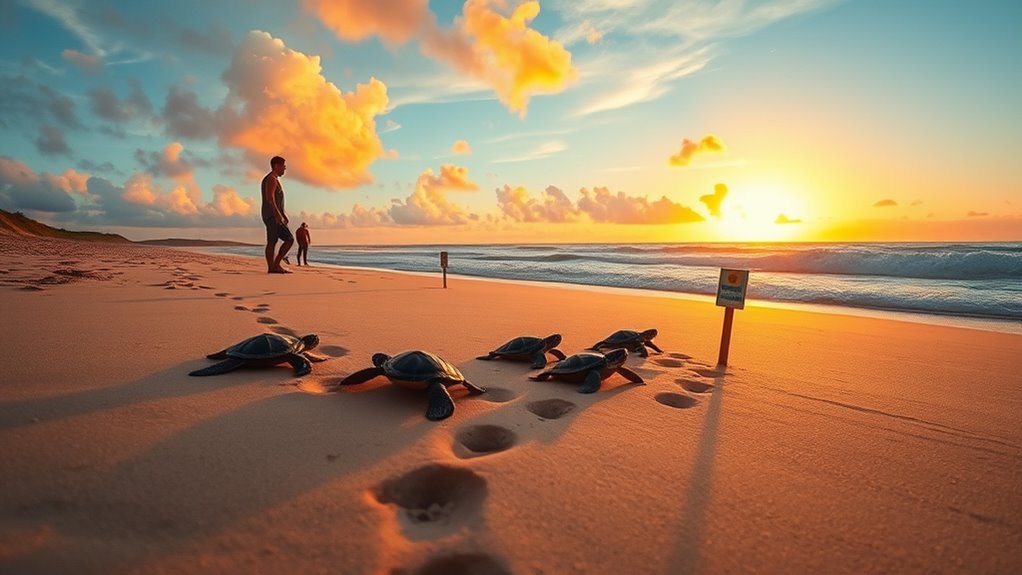
As you stroll along the pristine beaches of Costa Rica, you might spot sea turtles nesting under the moonlight, a breathtaking sight that highlights the need for their protection.
These ancient mariners face numerous threats, including habitat loss, poaching, and pollution. Fortunately, dedicated conservation efforts have emerged to safeguard their future. Local organizations work tirelessly to monitor nesting sites, educate communities, and promote sustainable practices.
You can get involved by volunteering or participating in beach clean-ups, ensuring these magnificent creatures thrive. By supporting eco-tourism initiatives, you help fund conservation projects and raise awareness.
The Comeback of the American Bison on the Great Plains
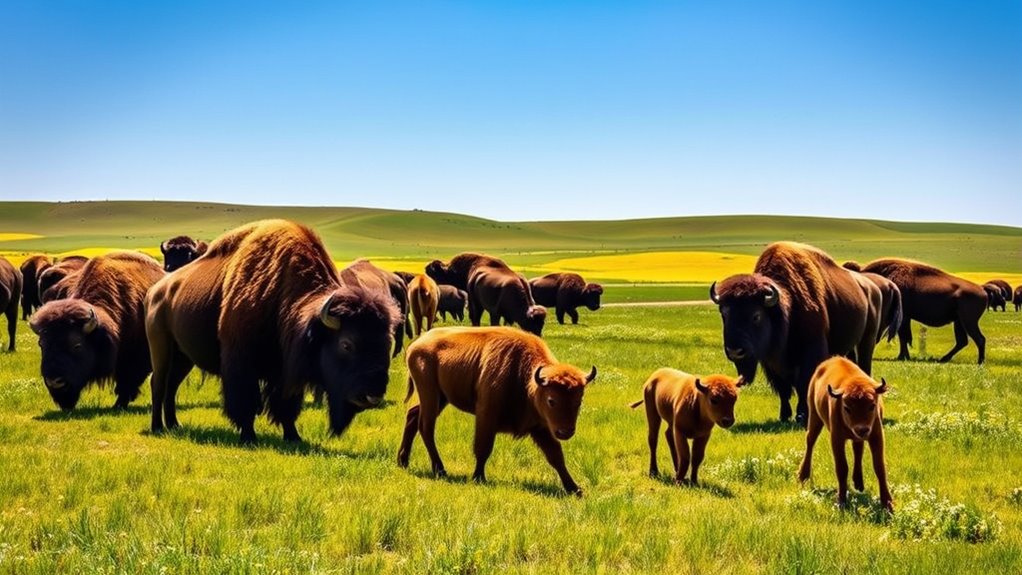
While protecting sea turtles in Costa Rica showcases the importance of conservation, another inspiring story unfolds on the Great Plains: the remarkable comeback of the American bison.
Once on the brink of extinction, these majestic animals now roam vast grasslands thanks to dedicated conservation efforts. You can see thriving herds in protected areas, where habitat restoration and sustainable grazing practices have played a crucial role.
Organizations and tribes have collaborated to reintroduce bison to their native landscapes, promoting biodiversity and ecological health. By supporting these initiatives, you help ensure that future generations can experience the awe of witnessing bison in their natural habitat.
The American bison's resurgence is a testament to what can be achieved when communities unite for wildlife conservation.
Innovative Water Conservation Projects in Australia
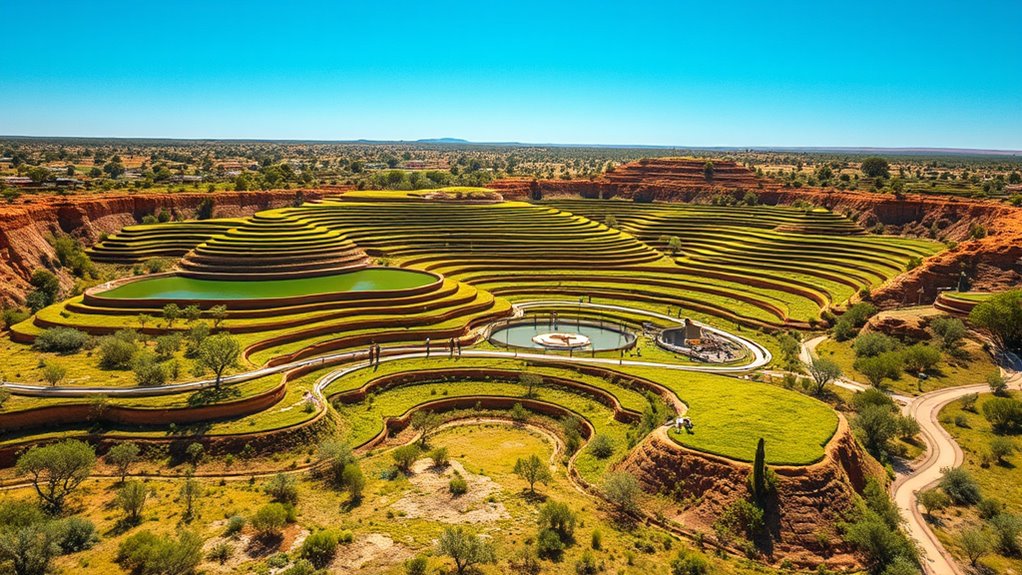
In a country where water scarcity is a pressing issue, innovative water conservation projects in Australia are making a significant impact. You might be amazed at initiatives like the Stormwater Harvesting Program, which captures and reuses rainwater for irrigation and other non-drinking purposes. This project reduces reliance on traditional water sources while promoting sustainable practices.
Another example is the use of smart irrigation systems, which utilize sensors to minimize water waste in agriculture.
You can also explore community-led programs that educate residents about water-saving techniques at home. Together, these projects not only conserve vital water resources but also foster a culture of sustainability and awareness.
Frequently Asked Questions
What Role Do Local Communities Play in Conservation Efforts?
Local communities play a crucial role in conservation efforts. You engage with your environment, understanding its needs and challenges better than outsiders.
By participating in sustainable practices, you help protect biodiversity and natural resources. Your local knowledge fosters effective conservation strategies that resonate with the community's culture and values.
When you collaborate with organizations, you amplify your voice, ensuring that conservation initiatives benefit both the ecosystem and your community's livelihood.
How Do Climate Changes Impact Conservation Success Stories?
Climate change acts like a relentless tide, eroding the foundations of conservation success stories.
You'll find that rising temperatures and shifting weather patterns disrupt ecosystems, threatening the delicate balance that conservationists strive to maintain. Species may migrate or dwindle, and habitats can transform overnight.
Your efforts to protect these environments might face new challenges, pushing you to adapt strategies and collaborate more closely with local communities to ensure lasting impact amidst these changes.
What Funding Sources Support These Conservation Projects?
You'll find various funding sources that support conservation projects.
Governments often allocate grants specifically for environmental initiatives. Nonprofit organizations and foundations provide financial backing as well.
Additionally, crowdfunding platforms have emerged, allowing individuals to contribute directly to specific projects. Corporate sponsorships can also play a role, as businesses seek to enhance their sustainability image.
How Can Individuals Contribute to Global Conservation Efforts?
You might think your efforts are too small to matter, but every action counts.
Start by reducing your carbon footprint—bike, walk, or use public transport. Volunteer with local conservation groups or donate to reputable organizations dedicated to wildlife protection.
You can also spread awareness among friends and family about sustainable practices. Each conversation, every small change, contributes to a larger impact.
When you act, you're part of a global movement for a healthier planet.
What Are the Long-Term Challenges These Success Stories Face?
Long-term challenges often stem from climate change, habitat loss, and insufficient funding.
You might notice that as ecosystems recover, they can face new threats like invasive species or changing weather patterns.
Moreover, community engagement is crucial; without local support, efforts can falter.
Sustainable practices need continuous promotion to maintain progress, and policy changes can be slow, making it essential for you to stay informed and advocate for long-term solutions.
Conclusion
As you reflect on these conservation success stories, it's striking how interconnected our planet is. Just as the gray wolf's return to Yellowstone coincided with healthier ecosystems, your own small efforts can spark significant change. Every tree planted in Brazil or sea turtle protected in Costa Rica adds to a global mosaic of recovery. By embracing these victories, you not only inspire hope but also become a part of a larger story—one that champions resilience and unity in the face of challenges.
